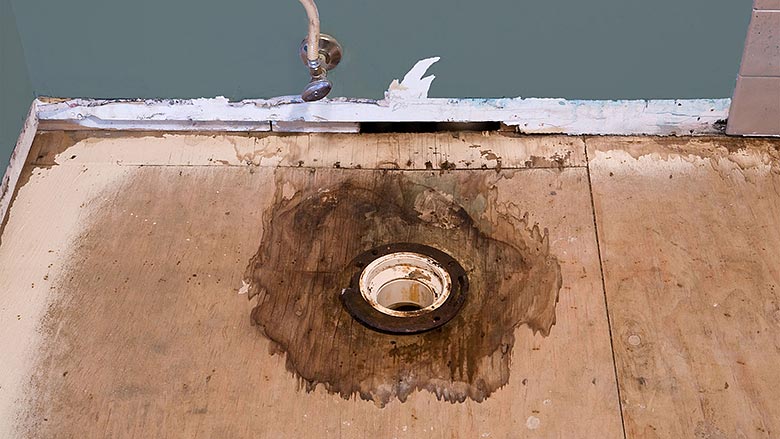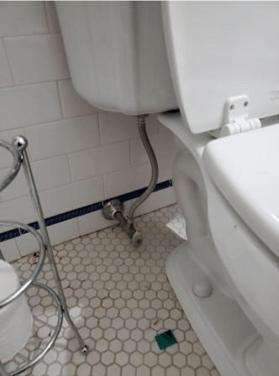Ways to Repair a Water-Damaged Wall in the Bathroom
Ways to Repair a Water-Damaged Wall in the Bathroom
Blog Article
Everyone will have their own individual conception when it comes to How to Fix a Water Damage Bathroom.

The shower room is very susceptible for damp build-up and also potential water damage as a result of the frequent use of water in it. This short article provides straightforward inspection methods to aid detecting water damage dangers.
The constant use water in the restroom makes it very at risk for moist buildup and also potential water damage. By checking it consistently, you can lower water associated problems.
The adhering to set of evaluations is simple to carry out as well as must be done when in every three months in order to keep your shower room healthy and also to stop possible water problems brought on by the bath tub, the shower, pipeline joints and also plumbing, sinks, closets, and also the commode
Do not forget executing these examinations and also be detailed while executing them. Remember that these straightforward inspections can conserve you a great deal of cash by supplying very early indicators for water damage
Sinks and Cabinets
Sinks and cabinets are revealed to dampness and also moisture everyday and also are frequently neglected. Examine frequently under the sink and on the kitchen counter over it. Repair any drip in the catch as it might recommend drain issues. Browse the sink, sluggish draining pipes might show a blocked drain. Change sink seals if they are fractured or loosened.
Bathtub and Shower
The shower and also tub require special attention and also upkeep. Inspect the tiles and also change if broken. Ensure that there is no missing cement in between the floor tiles. Check and replace fractured caulking at joints where the walls fulfill the flooring or the tub. Blocked drains and also pipelines problems will certainly protect against the tub from drying and also might suggest serious troubles underneath the bathtub. Seek advice from a specialist promptly to avoid architectural damages. Take note of stainings or soft locations around the bathtub wall surfaces as they may show an interior leak.
Plumbing
Signs for water damages are difficult to detect given that many pipelines are set up inside the wall surfaces.
Pay special attention to floor covering and wall surfaces moisture and also spots as they might suggest an invisible plumbing issue. Check wetness levels in adjacent rooms too.
The Toilet
The commode is a prone water joint. Check the water lines and also search for leakages around the toilet seat, in the pipe, and under the water storage tank. If you detect any indicators of moisture on the floor around the commode, check for leakages in the toilet rim as well as container seals.
Understand that hanging commode bowl deodorants raises the chances for blockages.
Water Damage Signs In The Bathroom To Avoid Cleanup
Musty smell
This is one of the easiest signs to catch because musty smells are so odorous. The damp, earthy, moldy smell should be a big red flag. The smell will develop when moisture gets trapped in surfaces, and begins to facilitate mold growth. Leaking pipes under cabinets, inside walls, and behind shower fixtures will cause moisture to stay trapped and not dry, which will lead to mold growth and spread. As soon as you notice any musty smells in your bathroom, have it checked for hidden water damage and cleanup signs.
Visible mold
If the smell isn’t there to give it away, sometimes you will actually see mold growth. Finding mold in your bathroom is a serious problem, because mold is very harmful to your health. By the time mold growth is visible, it also means that water damage has already occurred and been present for some time. The only way the mold problem can be resolved is to find the source of the moisture and get it stopped. To safely and adequately remove mold, you need to have professionals handle the remediation. Do not waste any time in getting mold problems addressed, fixed, and sanitized so that you can protect you and your family from the many respiratory symptoms caused by mold exposure.
Damaged floors
Bathroom floors should be able to withstand some exposure to water while still remaining in good condition. However, when excess exposure or water leaks occur, they will begin to damage even the most water-resistant flooring. If you notice any cracking, bubbling, staining, or warping on your bathroom floors, there is probably a water leak somewhere causing the distortion. If you notice areas of the floor have become softer, or even have a spongy feeling, there is probably damage to the subfloor. Subflooring is typically made up of plywood. When plywood is exposed to water or moisture, it will absorb it. Once it has become saturated, the weight of the excess water will cause the wood to swell and soften. Check the floors in your bathroom frequently to catch any of these sings before they lead to damaged subflooring.
Changes on walls
When water leaks behind walls, it will cause changes in the drywall. Peeling plaster, blistering paint, and soggy wallpaper are all good indicators that excess water is building up behind the wall. Water leaking behind drywall will cause it to swell and be soft to the tough. If you start to notice gaps along the trim of your walls, or where tile meets the wall, it could also be a strong indicator that there is a leak behind the wall. Any changes, distortion, or damage on the walls should be evaluated as soon as you notice it to prevent further water damage and cleanup.

I found that page about How to Repair and Prevent Bathroom Water Damage while doing a search on the search engines. Loved our article? Please share it. Let someone else discover it. Thank you for your time. Visit again soon.
Click Report this page